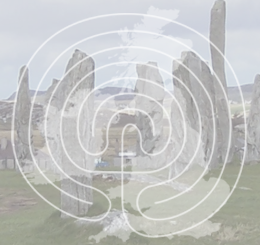Silbury Hill
This hill is the biggest man made mound in Europe. It is 130 feet high and 100 feet across its flat top surface.
The hill was built around 2500BC, formed with some of the chalk from the great henge at Avebury, and built in a complex lattice structure of in-filled chalk walls.
 The hill has been excavated several times, but no traces of burial have ever been found. The first excavation was during 1776, when the Duke of Northumberland hired a number of Cornish miners to bore a hole from the top down through the centre of the mound. Nothing was found during this excavation.
The hill has been excavated several times, but no traces of burial have ever been found. The first excavation was during 1776, when the Duke of Northumberland hired a number of Cornish miners to bore a hole from the top down through the centre of the mound. Nothing was found during this excavation.
In 1849 a side tunnel was dug from near the bottom to the centre of the mound, again no traces of any artefacts were recovered but some information on the structure of the mound were gleaned.
The last excavation was during 1968-70 was led by Professor Richard Atckinson who also bored into the side of the hill. These excavations have caused weakening to the structure of the mound, so much so that it is being monitored for movement by English Heritage.
According to folklore the mound was the final resting place for King Sil, who sat upright on a golden horse or within a golden coffin, depending on which version you prefer. The hill is also said to have been dropped by the Devil, who was carrying earth to bury Avebury. The priests of Avebury prayed for redemption, and the Devil was forced to drop his load short of the village.
Paul Devereux has suggested that the hill is the focus for the whole of the Avebury Neolithic Complex.




Re: Silbury Hill
Legend has it that King Zil is buried beneath the mound, similar to a pyramid over a mastaba, not inside the mound. Its purpose, or so I believe, was to track the motion of the sun on particular dates such as the equinox. On these dates the sun would appear to travel either up or down the slope of the hill.